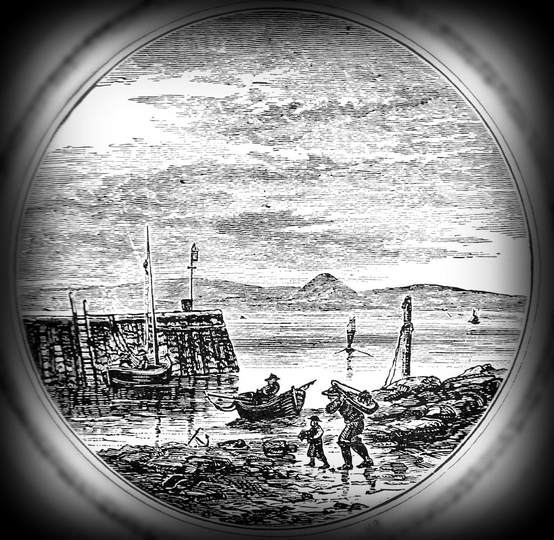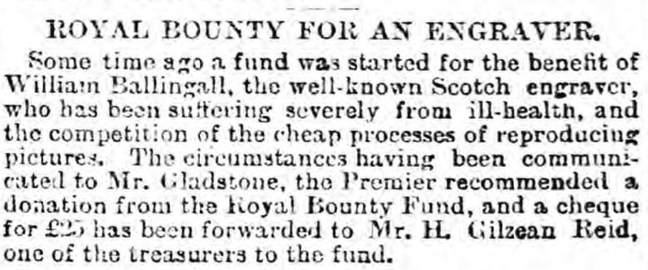"William Ballingall, Mr Grierson wrote to Dr Smiles, is a weaver in the town of Lower Largo, Fifeshire; and from his early days he has made astronomy the subject of passionate study. I used to spend my school vacation at Largo, and have frequently heard him expound upon his favourite subject. I believe that very high opinions have been expressed by scientific gentlemen regarding Ballingall's attainments. They were no doubt surprised that an individual with a very limited amount of education, and whose hours of labour were from five in the morning until ten or eleven at night, should be able to acquire so much knowledge on so profound a subject. Had he possessed a fair amount of education, and an assortment of scientific instruments and books, the world would have heard more about him."
William senior lived to the age of 87, passing away a widower at Wood's Hospital, Upper Largo in 1904.
Returning to William junior, by 1861, he was lodging in Cowcaddens Street in Glasgow, while working as a wood engraver. His fellow lodgers included a carver and gilder, a printer's compositor, a commercial clerk and a saddler. Shortly afterwards, he moved to Edinburgh and on 11 November 1864 married Elizabeth Stewart (daughter of sawyer John Stewart) there. The couple settled in the capital and started their family there. The 1871 census finds William working as an engraver and living at 35 Cockburn Street, with wife Elizabeth, children William and George, plus his brothers Alexander (also an engraver) and David (a tailor).

However, circumstances soon changed. By 1881, the family had relocated to Camberwell in London. In December 1882 William Ballingall's health took a downturn, being "laid aside by an illness of a very serious character, attended by a perilous operation" (Greenock Telegraph).
Also around this time the art of wood engraving was under threat from both new methods of mechanical reproductions of drawings and by photography.
"The new processes invented for producing engraving blocks and illustrations of various sorts, while threatening the very existence of the art of wood engraving, have destroyed the livelihood of many skilled workers in that art. Lovers of artistic engraving, and especially Scottish lovers of art, will hear with concern that amongst the greatest sufferers from the revolution that has taken place in the illustration of books and journals is the distinguished Scottish artist Mr William Ballingall. In consequence of the falling away of the demand for high class work by which he made his name, Mr Ballingall, after a courageous struggle against misfortune and illness, finds himself reduced to absolute want. For ten years past a confirmed invalid, with the anxieties and cares of a family, added to a heavy burden of sickness and pain, he has done his best to make a livelihood by his calling. Under those circumstances an endeavour is being made by friends of the unfortunate artist and admirers of his work and character to raise a fund sufficient to establish him in a modest way in some light business - it is proposed as a bookseller or stationer."
He was still in London at this time, with his wife and their two youngest children (David born 1880 and Violet born 1883). The piece below from the 17 Dec 1892 Blackburn Standard refers to the fund started for Ballingall.





 RSS Feed
RSS Feed
